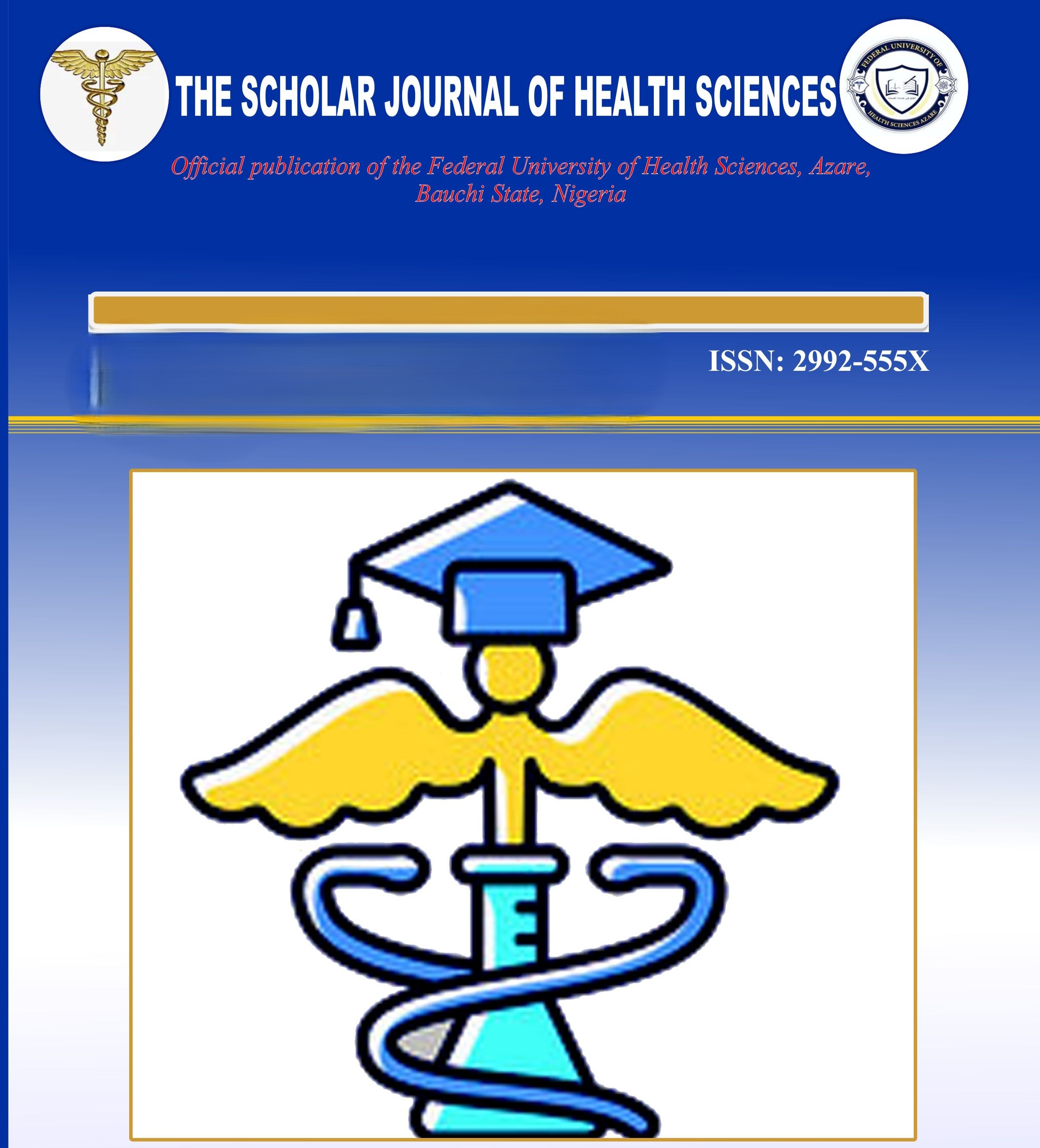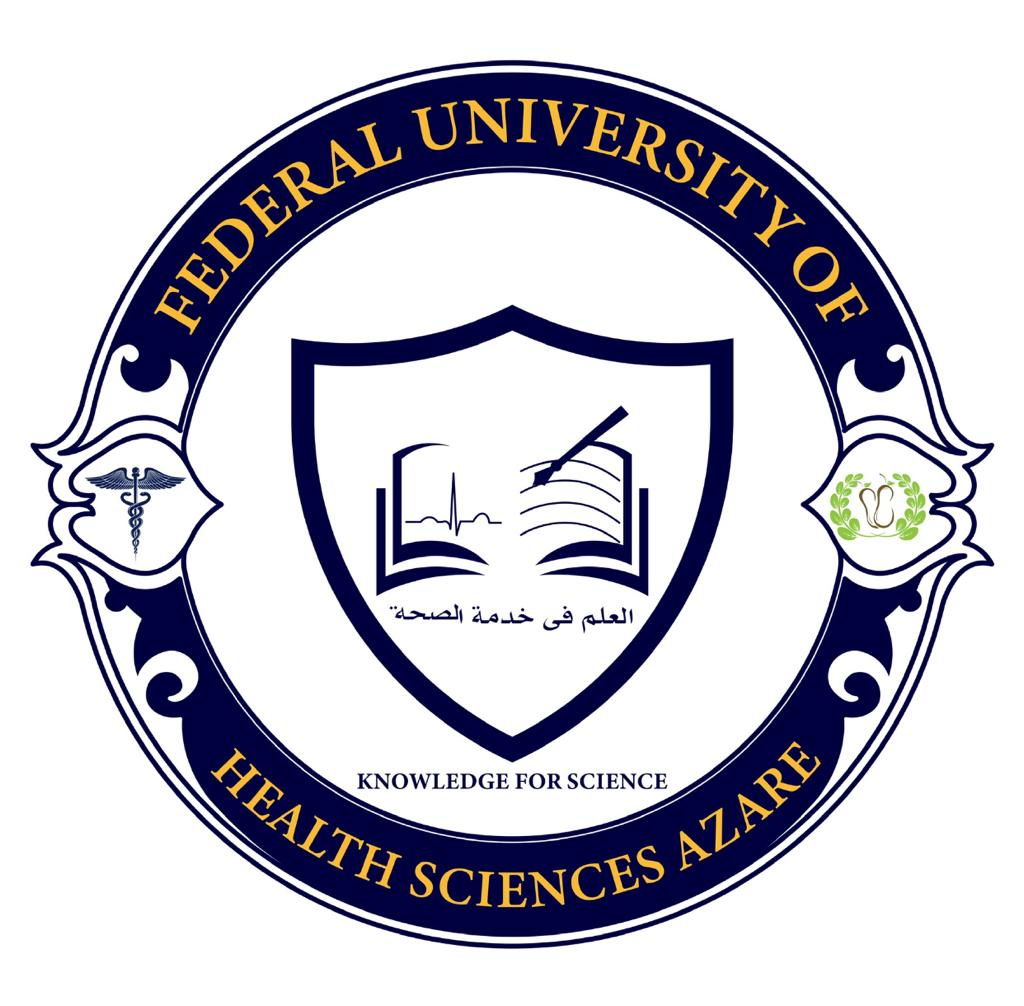ASSESSMENT OF SALMONELLA CONTAMINATION IN GROUNDWATER FROM GADAU METROPOLIS, BAUCHI STATE, NIGERIA: PREVALENCE AND POTENTIAL RISK FACTORS
Keywords:
Biochemical, , Microbiological , Salmonella, Microorganisms , TurbidityAbstract
ABSTRACT
Background
Groundwater constitutes approximately 30% of the world's freshwater supply, accounting for 0.76% of the planet's total water resources. The metabolic versatility of bacteria plays a crucial role in groundwater activities, with both beneficial and disease-causing microorganisms present.
Objectives
This study aims to investigate the presence of Salmonella in groundwater sources in Gadau metropolis.
Methods
Water samples (100 mL each) were aseptically collected and analyzed for pH, phosphate, turbidity, Total Dissolved Solids (TDS), and hardness/softness. Microbiological and biochemical assays were also conducted on the isolate.
Results
The results revealed the presence of unaidentified aerobic mesophilic bacteria and coliforms in tap water from six locations. The highest aerobic bacteria count (5.37 ± 0.29 x 10^2 cfu/ml) was observed in Malamawa, while the lowest count was recorded in Tsangaya (4.38 ± 0.29 x 10^2 cfu/ml). Salmonella spp was isolated from three locations: New Villa, Malamawa, and Unguwan Kasa. Significant variations in conductivity, pH, turbidity, temperature, dissolved oxygen, biological oxygen demand, sulfate, phosphate, total dissolved solids, and nitrate concentrations were found across the six locations.
Conclusion
This study highlights the importance of monitoring groundwater quality to prevent the spread of waterborne diseases. The presence of Salmonella in three locations underscores the need for regular water testing and treatment to ensure safe drinking water.
References
Desbruslais A, Wealleans AL, Desbruslais A, Wealleans AL. Oxidation in Poultry Feed : Impact on the Bird and the Efficacy of Dietary Antioxidant Mitigation Strategies Oxidation in Poultry Feed : Impact on the Bird and the Efficacy of Dietary Antioxidant Mitigation Strategies. Poultry. 2022;1:246–77.
Yusuf KO, Imaji AE, Abioye OM, Sanusi HO, Abadunmi T, Aran O. Journal of Agriculture and Environment. J Agric Environ. 2023;19(2):69–75.
Vlaicu PA, Untea AE, Oancea AG, Vlaicu PA, Untea AE, Oancea AG. Sustainable Poultry Feeding Strategies for Achieving Zero Hunger and Enhancing Food Quality Hunger and Enhancing Food Quality. Agriculture. 2024;II(14).
Shu-Kee Enga, , Priyia Pusparajaha , Nurul-Syakima A Mutalibc , Hooi-Leng Ser K-GC and L-HL. Salmonella_ A review on pathogenesis, epidemiology, and antibiotic resistance. 2015.
Lamichhane B, Mawad AMM, Saleh M, Kelley WG, Ii PJH, Lovestad CW, et al. Salmonellosis : An Overview of Epidemiology, Pathogenesis, and Innovative Approaches to Mitigate the Antimicrobial-Resistant Infections. Antibiotics. 2024;
Cheng YC, Kim SW. Use of Microorganisms as Nutritional and Functional Feedstuffs for Nursery Pigs and Broilers. Vol. 12, Animals. 2022.
Twarużek M, Skrzydlewski, P.Kosicki, R.JGrajewski . Mycotoxins survey in feed materials and feedingstuffs in years 2015–2020 - ScienceDirect. 2021.
Paul J. Gastrointestinal tract infections. InDisease Causing Microbes 2024 Jan 3 (pp. 149-215). Cham: Springer International Publishing.
Popa GL, Popa MI. Salmonella spp. Infection – a continuous threat worldwide. Germs. 2021;11(1):88–96.
Teklemariam AD, Al-Hindi RR, Albiheyri RS, Alharbi MG, Alghamdi MA, Filimban AAR, et al. Human Salmonellosis: A Continuous Global Threat in the Farm-to-Fork Food Safety Continuum. Foods. 2023;12(9).
Shaji S, Selvaraj RK, Shanmugasundaram R. Salmonella Infection in Poultry: A Review on the Pathogen and Control Strategies. Microorganisms. 2023;11(11).
Nowicki S, Birhanu B, Tanui F, Sule MN, Charles K, Olago D, et al. Water chemistry poses health risks as reliance on groundwater increases: A systematic review of hydrogeochemistry research from Ethiopia and Kenya. Sci Total Environ [Internet]. 2023;904(September):166929. Available from: https://doi.org/10.1016/j.scitotenv.2023.166929
Holcomb DA, Stewart JR, Richiardi L, Pignata C, Fea E, Bonetta S, et al. Sources and factors influencing groundwater quality and associated health implications: A review. Sci Total Environ [Internet]. 2023;7(2):100207. Available from: https://doi.org/10.1016/j.emcon.2023.100207
Tufa TB, Regassa F, Amenu K, Stegeman JA, Hogeveen H. Livestock producers’ knowledge, attitude, and behavior (KAB) regarding antimicrobial use in Ethiopia. Front Vet Sci. 2023;10:1–20.
Muteeb G, Rehman MT, Shahwan M, Aatif M. Origin of Antibiotics and Antibiotic Resistance, and Their Impacts on Drug Development: A Narrative Review. Pharmaceuticals. 2023;16(11):1–54.
Ahmed SK, Hussein S, Qurbani K, Ibrahim RH, Fareeq A, Mahmood KA, et al. Antimicrobial resistance: Impacts, challenges, and future prospects. J Med Surgery, Public Heal [Internet]. 2024;2(March):100081. Available from: https://doi.org/10.1016/j.glmedi.2024.100081
Sanni AO, Onyango J, Rota AF, Mikecz O, Usman A, PicaCiamarra U, et al. Underestimated economic and social burdens of non-Typhoidal Salmonella infections: The One Health perspective from Nigeria. One Heal [Internet]. 2023;16:100546. Available from: https://doi.org/10.1016/j.onehlt.2023.100546
Abdullahi M, Dantata I, Bawa A. Impact of livestock farming on groundwater quality in Northern Nigeria. J Environ Health. 2022;15(3):45-59.
Eze P, Okoye C, Ugwu C. Microbial contamination of groundwater in peri-urban settlements: A case study of Enugu, Nigeria. Afr J Environ Sci. 2022;10(2):112-25.
Ibekwe V, Adeoye P, Okafor N. Hydrogeological risks of poorly constructed wells in Sub-Saharan Africa. Water Resour Manag. 2023;37(4):201-15.
Nkwocha E, Pat-Mbano E, Tony-Okeke U. Waterborne disease outbreaks in Nigeria: A review of causative agents and risk factors. Public Health Chall. 2021;3(1):78-92.
Oluwasanmi A, Adetunji V, Odeyemi O. Bacteriological quality of rural well water in Kwara State: Implications for public health. Niger J Microbiol. 2023;28(2):34-48.
Oyebode L, Salami K, Ajayi I. Effectiveness of household water treatment interventions in reducing diarrheal diseases in Northern Nigeria. J Water Health. 2024;22(1):67-82.
UNESCO. Water Quality and Human Health in Africa. Paris: UNESCO Publishing; 2023.
WaterAid Nigeria. Clean Water and Hygiene Promotion in Rural Communities. Abuja: WaterAid Nigeria; 2023.
World Health Organization. Guidelines for Drinking-Water Quality. 4th ed. Geneva: WHO; 2022.
World Health Organization, UNICEF. Progress on Household Drinking Water, Sanitation and Hygiene: 2000-2022. New York: United Nations; 2023.
Downloads
Published
Data Availability Statement
Data available if needed





